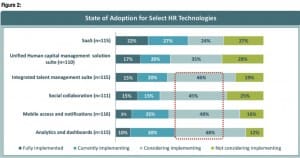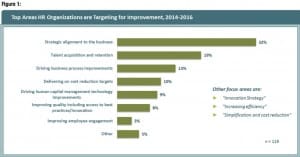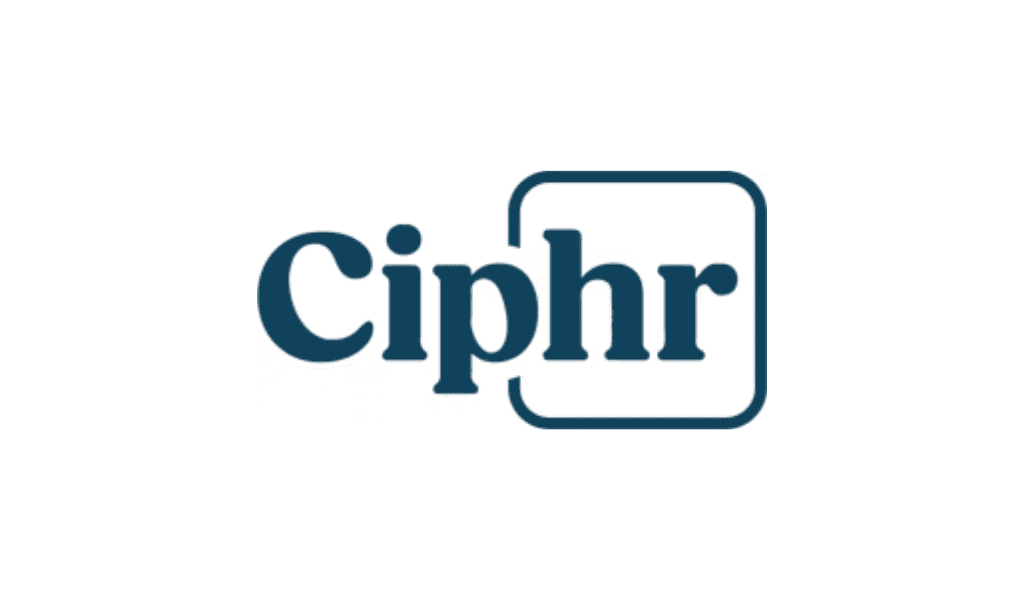 A new report outlines how HR platforms are improving user experience and business outcomes.
A new report outlines how HR platforms are improving user experience and business outcomes.
By Maribeth Sivak and Debora Card
HR executives are mainly seeking an improved user experience through the implementation of new HR technologies, outsourcing, and shared services models. This is the main theme from Information Services Group’s (ISG) recent Industry Trends in Human Resources Technology and Service Delivery survey that explored the changing landscape of HR technology and service delivery.
The latest innovations in HR technology and service delivery present organizations with the opportunity to reimagine the employee, manager, and executive experience in ways that increase user productivity, engagement, and adoption.
Organizations that are looking to transform their HR service delivery should begin planning now to replace their traditional ERP and point solutions with a unified, cloud-based human capital management (HCM) solution supported by a HR service delivery model that is designed to deliver a consistent global employee experience. ISG does not believe organizations should make this journey for cost savings alone. The real value lies in:
• Advances in cloud technology that create massive economies of scale and allow customers to benefit from SaaS HCM providers’ continuous innovation investments;
• Business process frameworks offering process workflows that can be configured by functional business resources, thereby reducing reliance on IT;
• Real-time workforce visibility and flexibility that enable organizations to respond to changing market conditions, emerging markets, and growth objectives;
• User interfaces that deliver a consumer-like experience, including mobile and social capabilities, driving usability and user adoption;
• Service delivery models that extend the user experience through wraparound portals, inquiry support through chat and call center, and integration to surrounding business processes; and
• Service delivery models that deploy new shared services operating approaches that reflect a strategic approach to outsourcing and position the HR function to make a greater contribution to the organization’s strategic and reputational objectives.
While an improved user experience topped the list of expected benefits from implementing new HR technology and HR delivery models, another expected benefit was access to ongoing innovation and best practices to better support the business. The shared, multi-tenant nature of SaaS HCM solutions allows SaaS and HR outsourcing service providers to focus their improvement dollars, which in turn dramatically increases the pace of innovation they pass along to their customers.
Other key findings from ISG’s 2014 Industry Trends in Human Resources Technology and Service Delivery survey include the following.
1. Improving strategic alignment with the business. Nearly one third of respondents (32 percent) cited strategic alignment as their top improvement area, placing it comfortably ahead of second-ranked talent acquisition and improvement, which was cited by 19 percent of respondents (see Figure 1). Improving business processes followed with 13 percent, and delivering on cost reduction targets ranked fourth, as 10 percent of respondents cited it as their key focus area for improvement. Driving human capital management technology improvements (9 percent) completed the top five. Organizations are looking at a rich mix of solutions to help achieve their improvement goals, including adopting new technology, building shared services organizations, and outsourcing.
2. Software-as-a-Service (SaaS) is the future for human capital management. While licensed, on-premise software is still the predominant deployment method for HR systems, the survey found HRMS systems are being replaced by SaaS HCM solutions nearly as often
as upgrades. ISG Emerging Technology Analyst Stanton Jones reports that demand for SaaS is surging as enterprise SaaS providers are increasing revenues by double digits and are making significant inroads into large organizations, while simultaneously taking market share from their on-premise competitors.
Shared, multi-tenant platforms create strategic advantages for CHROs looking to transform their business models and ensure that they will continue to reap the benefit of technology improvements delivered through regular releases. Based on ISG’s client experience, the most common objectives companies are looking to achieve when contemplating an SaaS HCM solution are:
- A globally consistent and improved user experience;
- Scalable, end-to-end processes that deliver better functionality;
- Improved talent management, and better decision making through workforce insights; and
- Highly configurable solutions that are fast to deploy, provide continuous innovation and reduce dependence on IT.
Since 2012 there has been significant consolidation in the HCM landscape. IBM purchased Kenexa on the heels of SAP acquiring SuccessFactors and Oracle acquiring Taleo. These acquisitions reinforce that cloud has become the dominant delivery model for HCM solutions. Leading HCM software providers have generally acknowledged that cloud is their preferred delivery model by directing current and future investments primarily to the cloud.
However, not all client organizations are ready to jump on this fast-moving train; more than one third plan to “do nothing” with their current HRMS in the short-term as they wait and see how the market develops. A third of respondents are not planning any changes to their current HRMS and 23 percent expect to upgrade the current version. These totals each exceed the 21 percent of respondents that plan to replace their current HRMS with an SaaS solution.
The top concerns about moving to an SaaS HCM delivery model include security and data privacy, inability to customize, and the ability to retain configuration resources in a hot market for experienced talent.
 3. Mobile, social, analytics, and integrated talent management are top priorities. While only 3 percent of respondents have already deployed mobile HCM solutions in their enterprises, 25 percent are currently in the process of doing so, suggesting a huge short-term uptick (see Figure 2). HCM solutions that leverage mobile devices to radically change the user experience are gaining significant traction. Employees have become accustomed to an unprecedented convenience for accessing information online, whether through mobile phones, tablets, or personal computers. They expect HR applications to be as simple, intuitive, and task-oriented as participating in social media, banking online, or securing a flight. SaaS HCM providers have responded by adopting a “mobile first” design philosophy that has improved the mobile user experience and dramatically expanded the tasks users can perform on their mobile devices. This increases self-service adoption, especially with populations that do not have access to PCs or other traditional delivery channels.
3. Mobile, social, analytics, and integrated talent management are top priorities. While only 3 percent of respondents have already deployed mobile HCM solutions in their enterprises, 25 percent are currently in the process of doing so, suggesting a huge short-term uptick (see Figure 2). HCM solutions that leverage mobile devices to radically change the user experience are gaining significant traction. Employees have become accustomed to an unprecedented convenience for accessing information online, whether through mobile phones, tablets, or personal computers. They expect HR applications to be as simple, intuitive, and task-oriented as participating in social media, banking online, or securing a flight. SaaS HCM providers have responded by adopting a “mobile first” design philosophy that has improved the mobile user experience and dramatically expanded the tasks users can perform on their mobile devices. This increases self-service adoption, especially with populations that do not have access to PCs or other traditional delivery channels.
Transformation is not driven by social, mobile, analytics, and cloud (SMAC) technologies alone. Because SaaS HCM solutions are delivered using a shared, multi-tenant architecture, providers can focus on innovation rather than supporting old code and hardware. When providers are allowed to put their focus on the windshield, rather than the rear-view mirror, the pace of innovation accelerates.
4. Companies plan to implement new technology within two years. Savvy organizations are investing in technologies that provide the greatest near-term innovation and advances in service delivery, and are exploring the potential of newer offerings on the horizon. However, companies are no longer waiting on the sidelines to see if these new technologies will deliver on their promises. More than half of respondents plan to implement SaaS, social, mobile, analytics, unified HCM, and other HR technology solutions within the next two years.
5. Organizations believe that unified HCM, SaaS, and integrated talent management platforms deliver business case benefits. Organizations that have already adopted these technologies have been satisfied with the results. Ninety percent of unified human capital management system users said the implementation met or exceeded expectations, which was the top satisfaction rating for any technology solution. SaaS and integrated talent management were the next-highest rated solutions. Interestingly, no users of analytics and dashboards or integrated talent management systems said implementation results were below expectations.
Cost Considerations
ISG observes there can be a dissonance between the financial business case benefits customers expect and the financial benefits that may be delivered, especially for organizations that are contemplating a move to an SaaS HCM solution. Prior to performing a financial business case, customers expect:
• SaaS will be cheaper to implement;
• SaaS will be cheaper to run; and
• They will only have to pay for what they use.
ISG finds that these assumptions are not always true:
Implementation costs are not always less. Although SaaS platform implementations for HR can typically be completed much faster than on-premise licensed software because of the lack of customization, the overall implementation cost is not always significantly lower. Multiple factors affect implementation cost, including the client’s current hosting environment, its ability to sunset existing ERP systems and any associated hosting, the number of interfaces, and -importantly -the client resources available to assist in the service configuration.
Financial terms are usually heavily weighted to the supplier. Most SaaS HCM providers ask for a significant amount of cash up front, as much as 50 percent of the SaaS contract. Payment is also expected to begin when the contract is signed, not when the solution is implemented. Terms generally cannot be canceled and subscription fees cannot be reduced over the course of the term because of volume reductions. ISG is also seeing SaaS HCM providers ask for prices to increase in the out years of the subscription. Up-front fees, rate increases, and payment schedules are the most common issues that delay or derail SaaS HCM contract negotiations.
The engagement needs to cover a sufficient period to avoid at least one upgrade. Clients generally should not expect a significant savings when comparing monthly subscription fees for SaaS to the all-in cost of traditional ERP, which includes the amortized license cost, the software maintenance fees and the hosting and support costs. In fact, ISG is finding that in a short-term business case (say three years) where an upgrade may not occur in a traditional model, SaaS may actually be slightly more expensive. The real savings from SaaS comes from avoiding upgrades. Therefore, to be cost effective, an SaaS engagement needs to extend long enough to account for at least one traditional ERP upgrade, and that could mean at least five to seven years. At that length of time, the SaaS model becomes significantly more cost effective due to the cost avoidance from a large-scale upgrade.
Unlike a traditional ERP model where the client typically procures the licenses and hardware up front and depreciates the cost over the useful life of the assets, SaaS monthly subscription fees are expensed as incurred. Depending on how a company looks at the business case (P&L versus cash), this accounting treatment change, coupled with the size of the investment, can have a significant impact on the financials.
To mitigate the risk of unanticipated contract negotiation or implementation delays, ISG recommends that organizations develop a strategy that produces financial business case options modeled over a five-to-seven-year horizon before they go to market for new HR software. The business case should focus on investments, savings and implications to the organization’s broader HR service delivery model. Other factors that affect employee engagement and how quickly the business can respond to change should also be factored in. These include the qualitative benefits associated with flexibility, scalability and an improved user experience.
Maribeth Sivak is principal consultant for ISG and Debora Card is partner of the organization. The above is excerpted from the research report Human Resources Technology and Service Delivery Trends in 2014. This study was sponsored by ISG and HRO Today magazine.















